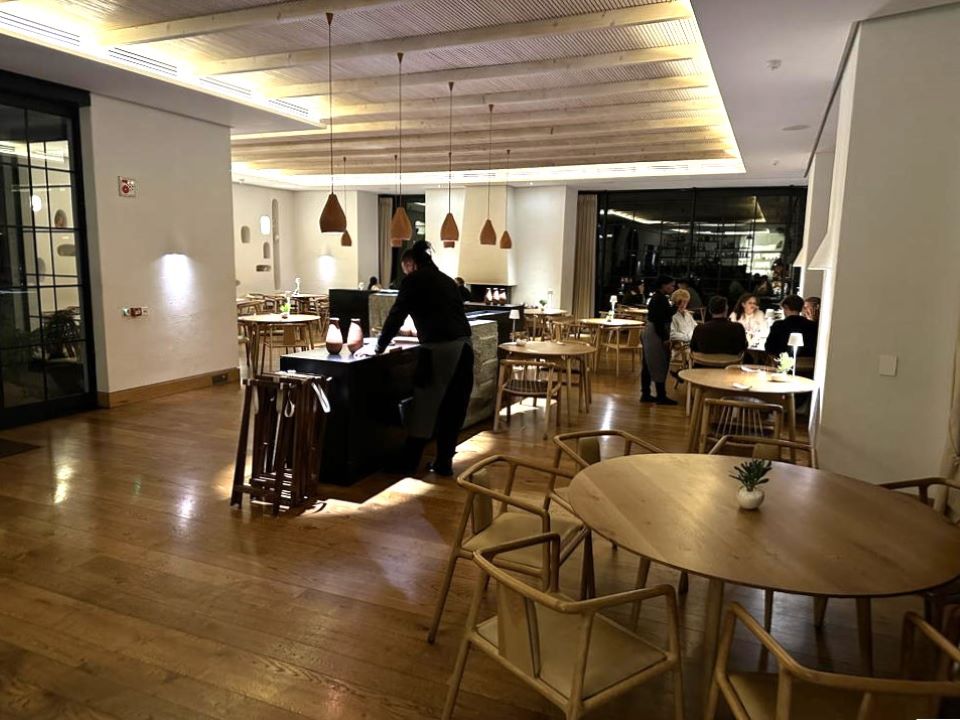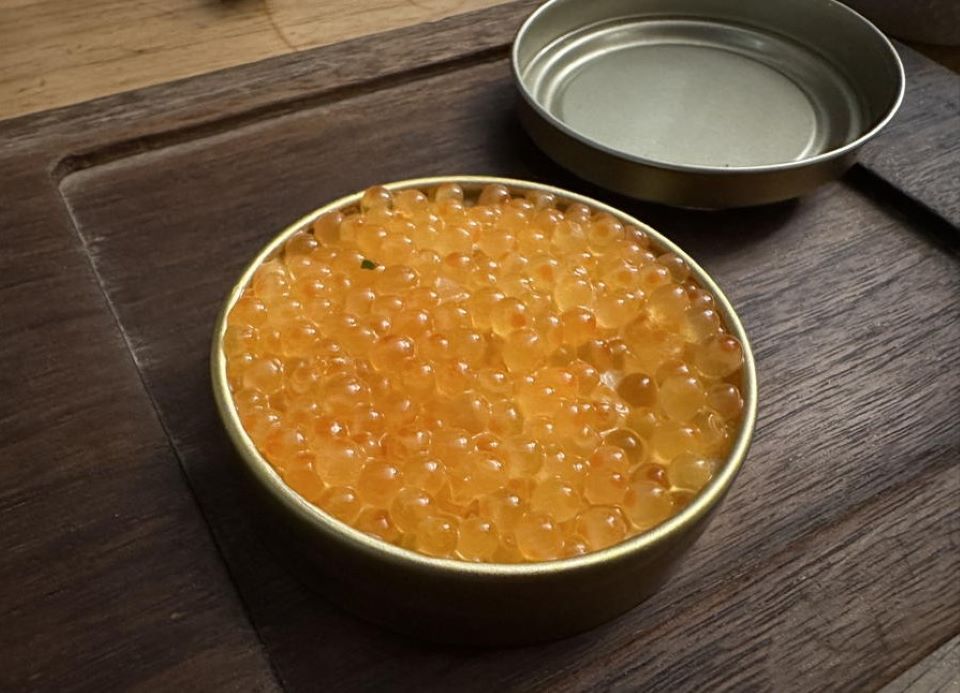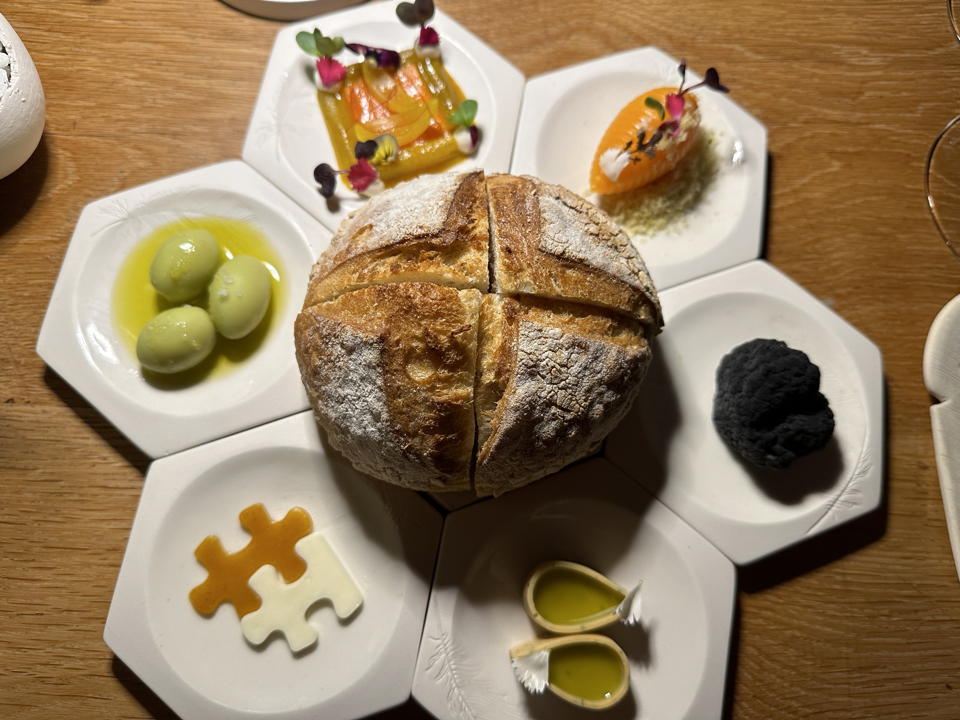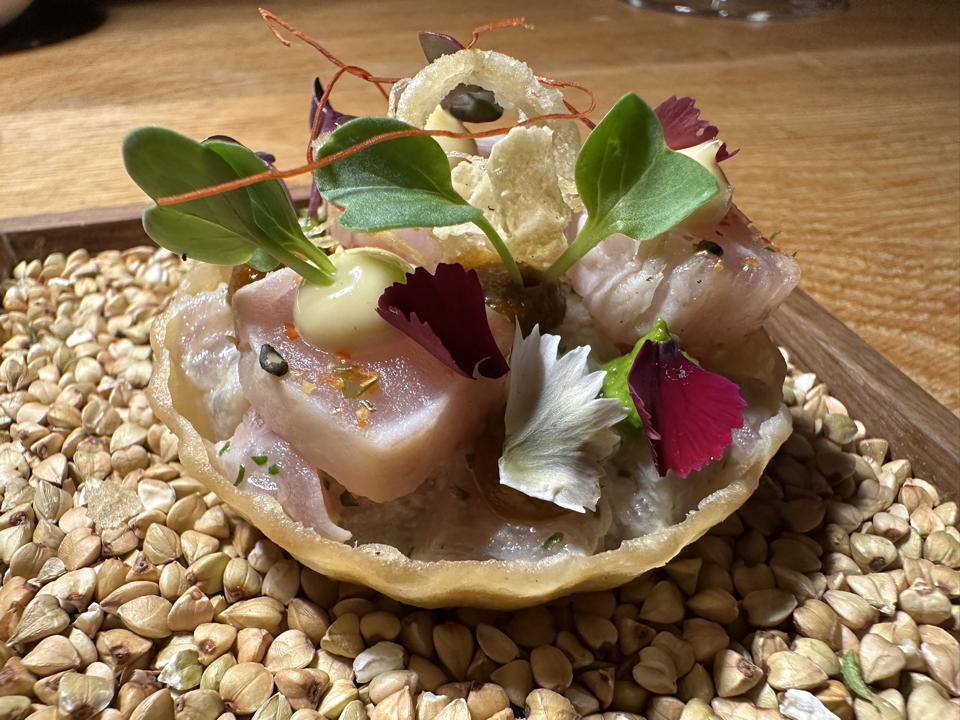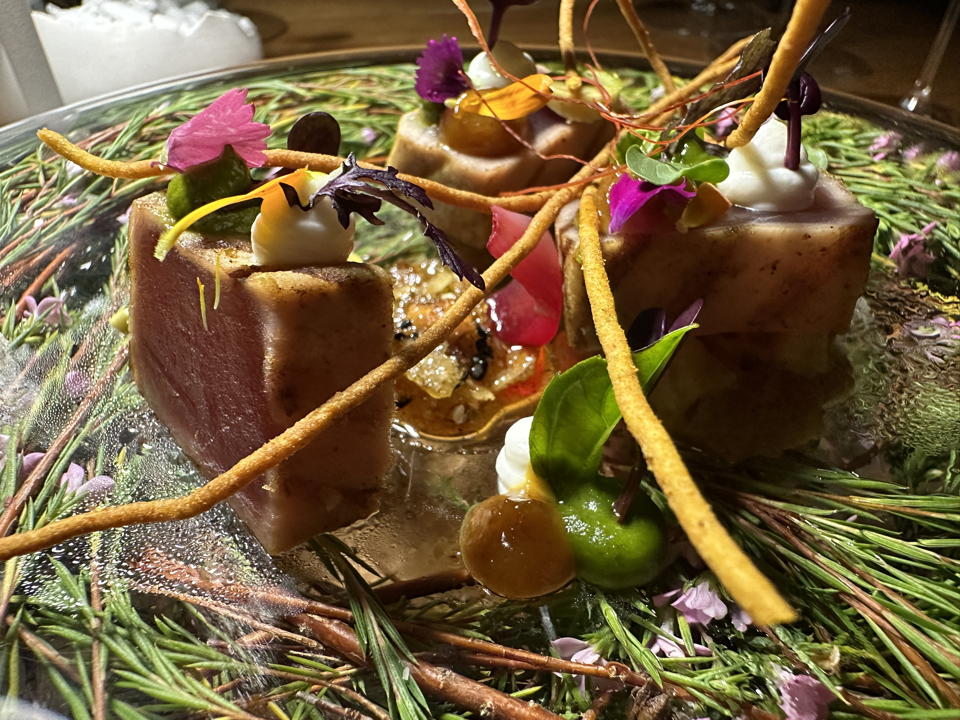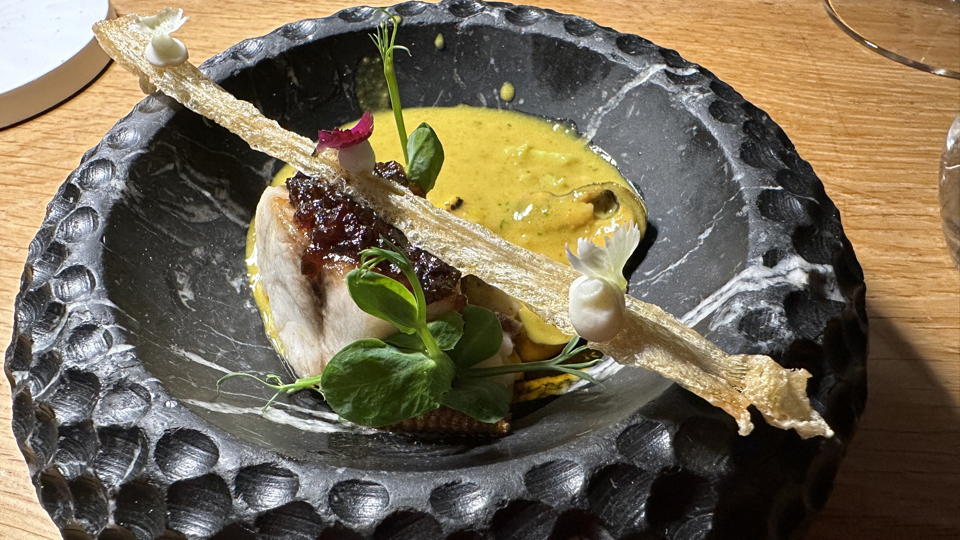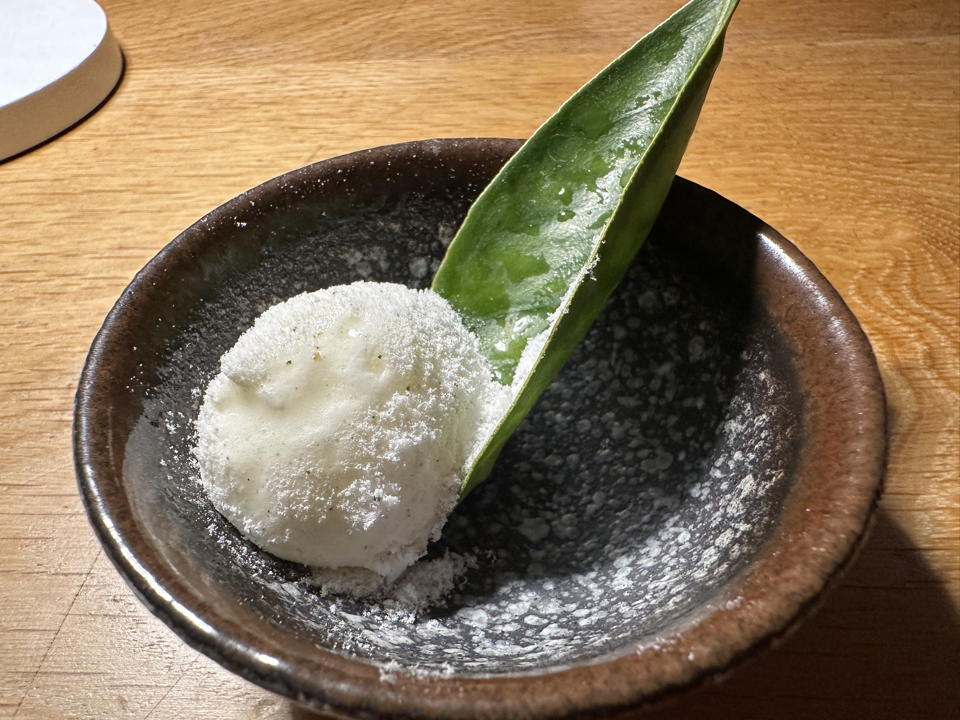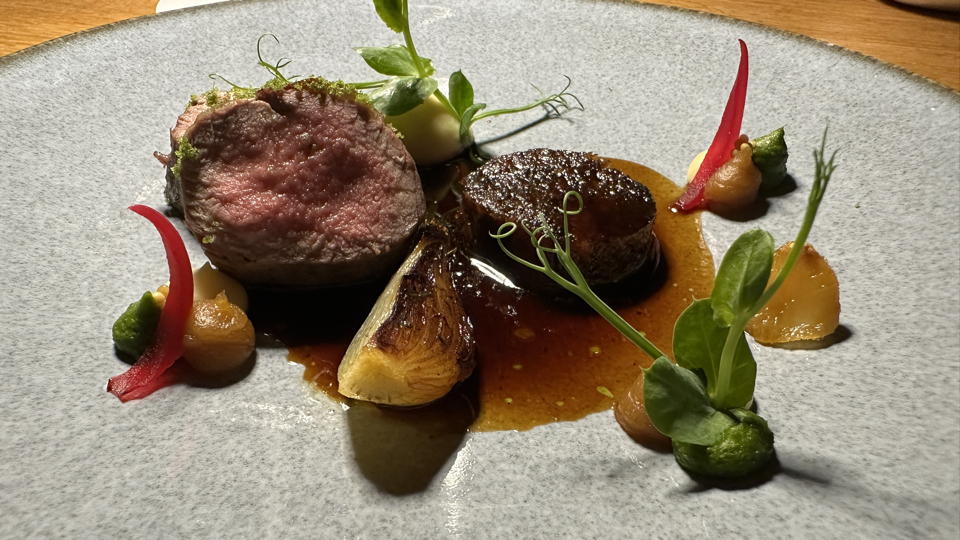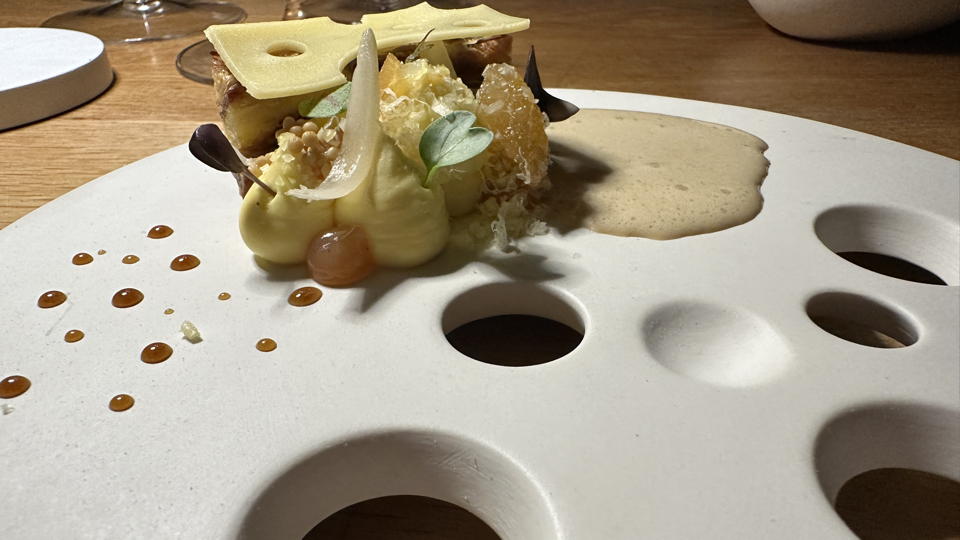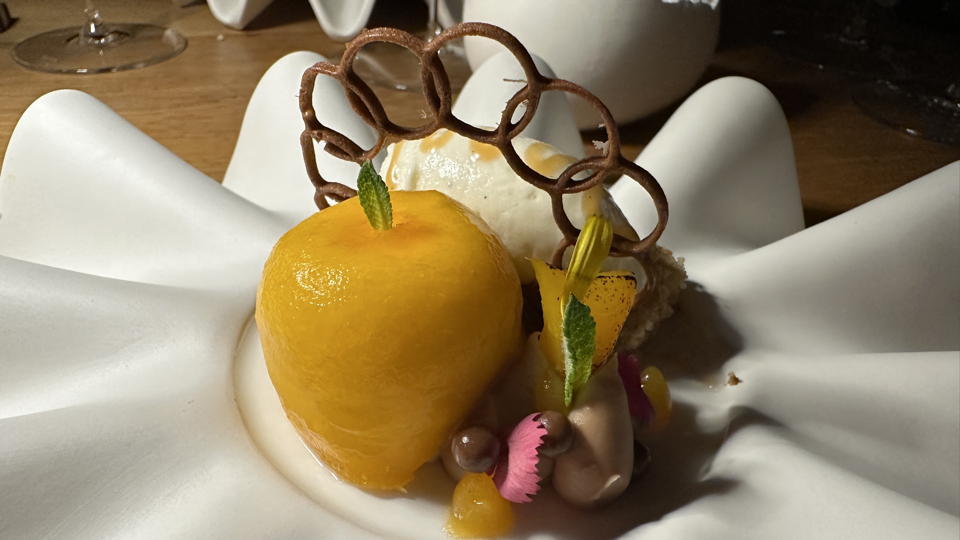Browse using the new Vinous website now. Launch →
Printed by, and for the sole use of . All rights reserved © 2015 Vinous Media
Leeu Estates, Dassenberg Rd
Franschhoek
South Africa
BY NEAL MARTIN | OCTOBER 04, 2024
The Food:
Amuse-bouche: Franschhoek trout roe, Namibian snow crab and Cape Malay empanada
Langoustine salad
Sourdough bread
Yellowtail tartlet, Nahm dressing, Jim and miso
Yellowfin tuna, Dhanya, coriander and coconut velouté
Seabass, “Viskop” chowder
Kalamansi, Worm Salt Mezcal
Karoo lamb, celeriac and Kapokbos
Smoked Stanford cheese, pear and mustard
Peach mousse, almond and crème fraiche
Sweets trolley
The Wines:
| 2022 Hogan Wines Chenin Blanc | 92 |
| 2022The Sadie Family Wines Grillo | 90 |
| 1964 Zonnebloem Cabernet Sauvignon | 93 |
| 1974 Nederburg Wines Cabernet Sauvignon | 91 |
| 2020 Saurwein Pinot Noir Saurwein Nom | 91 |
South Africa boasts several world-class restaurants. Two that stand out in the gastronomic Rolodex in my cerebral membrane are Test Kitchen (RIP) and La Colombe. The latter was a regular port-of-call during my first footsteps to the region and continues to thrive as part of the “The La Colombe Restaurant Group” founded by Scot Kirten. The group owns several locations, including three in Franschhoek, of which I visited two during my trip in July. Protégé, a more casual spot that acts as an incubator for young talent, chefs, waiters, maître d’ and sommeliers, was exceptional. I plan to return next year.
The La Petite Colombe interior
The following evening, I dined with a guest at the upmarket La Petite Colombe. This has been at the top of my list for a long time. The name is a bit misleading. La Petite Colombe to La Colombe is not what Le Petit Mouton is to Mouton Rothschild. In fact, several winemakers regard La Petite Colombe as the apex of the Cape’s culinary scene. Based on this experience, they could well be right. Under head chef Peter Duncan, La Petite Colombe is gastronomy cruising at high altitude. It is located in the Leeu Estate in Franschhoek, whose vineyards are under the management of Chris and Andrea Mullineux, a completely separate entity from their Swartland vineyard. Vines form only one part of the sprawling Leeu estate with luxury accommodations, spa retreats and galleries, all surrounded by manicured lawns and shrubbery. Pulling up outside La Petite Colombe, I have to imagine the splendid view over the Franschhoek Valley since it is dark, but should you be blessed with daylight, then there’s an outside terrace.
The
interior is certainly roomy and looks the part. We are ushered to a reception
area, where the amuse-bouche is served. Despite the size, it feels cozy and
relaxing, a light hubbub of noise on a relatively quiet Sunday evening. There
is something calming about its whitewashed walls and the minimal décor with Scandi-designed
wooden tables and chairs. Things seem to run like a well-oiled machine.
Cape Malay empanada
Being off-season, I could book a table, but in high season, given the influx of tourists to Franschhoek and the restaurant’s reputation, you must reserve well in advance.
Franschhoek trout roe
The first waiter serves three amuse-bouches. I say “first” because every course is served by a different person, thereby giving the impression that it is “their” dish. I’ve never seen this before. It conveyed a sense of ownership, not least because the waiters do the final prep at your table. It is difficult to imagine replicating this in the UK, where even for top restaurants it is challenging to find just one waiter, let alone a whole team. The service is friendly and impeccable from start to finish.
Langoustine salad
Escorted to a corner table, the set menu is served. There is a “Full Chef’s Experience” menu priced at 1,995 Rand, which is just under £90 or $115 per person. That is unbelievable value for the money. There are optional extras, but we keep it “simple”. I use that word ironically because I can’t remember the last meal that was so intricate. Waiters explain the minutiae of each course, and as much as I try to jot down details, in the end, I give up. I am writing an entire novel, notwithstanding their use of a multitude of indigenous ingredients that obliged explanations. The best way to convey the standard of cuisine at La Petite Colombe is by photographs, and I’ve just added some supplementary information. The common themes throughout are supremely well-sourced ingredients, astonishing presentation and a bit of theatre.
Sourdough bread
The langoustine is fished from Mozambique and comes with fresh celery and gazpacho, which combines lettuce juice with Bloody Mary juice.
Yellowtail tartlet, Nahm dressing, Jim and miso
The
sourdough dish is insane. No splodge of common or garden butter here. Where do
you begin? Amongst these are chicken liver pâté, snoek pâté (a fish related to
mackerel), piccalilli and chili pork fat. Look at the care that went into the
presentation and the array of colors.
Yellowfin tuna, Dhanya, coriander and coconut velouté
This yellowtail tartlet is a miniature object d’art. I feel guilty destroying it. It is indescribably delicious.
Seabass, “Viskop” chowder
Again, the yellowfin tuna is a breathtaking presentation. It is served on a glass plate with curled rosemary underneath. At the table, it is served with dhyana, a local type of coriander, a coconut velouté and a sultana purée.
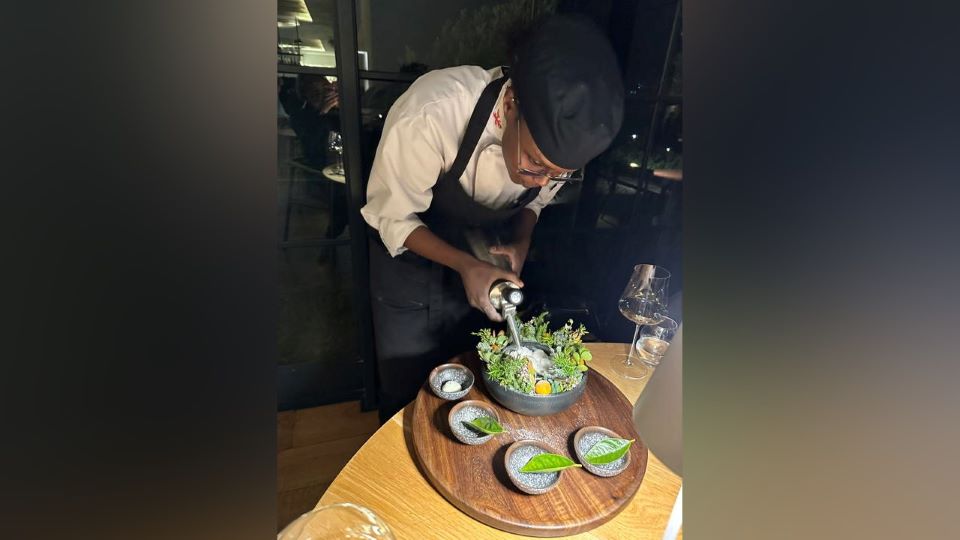
Kalamansi prep
The “line fish” on the menu is sea bass that is actually deep-fried in a small copper bath placed on our table. This comes with “Viskop” chowder made from fish heads, plus olive oil made at the Leeu estate, bacon jam and a chorizo and white bread sauce. Magnificent.
Kalamansi, Worm Salt Mezcal
The kalamansi, a citrus fruit grown on the estate, comes with Worm Salt Mezcal, a spicy/salty condiment made from grinding the larvae that live on the agave plant. Our waiter serves it from a pressurized container at our table, and we are instructed to use the lime leaves as spoons.
Karoo lamb, celeriac and Kapokbos
The Karoo lamb comes from the neck and is served with celeriac purée, Jerusalem artichoke and Kapokbos, a local wild rosemary. The meat is tender and packed with flavor.
Smoked Stanford cheese, pear and mustard
The smoked Stanford cheese is served with pear, mustard and pale ale beer foam. Perhaps this is just the one dish that doesn’t work for me; it's just a little overpowering and lacking the refinement of others.
Peach mousse, almond and crème fraiche
The stone fruit consists of a peach mousse, almond, crème fraiche, oat and sesame crumb and brandy caramel. It's divine.
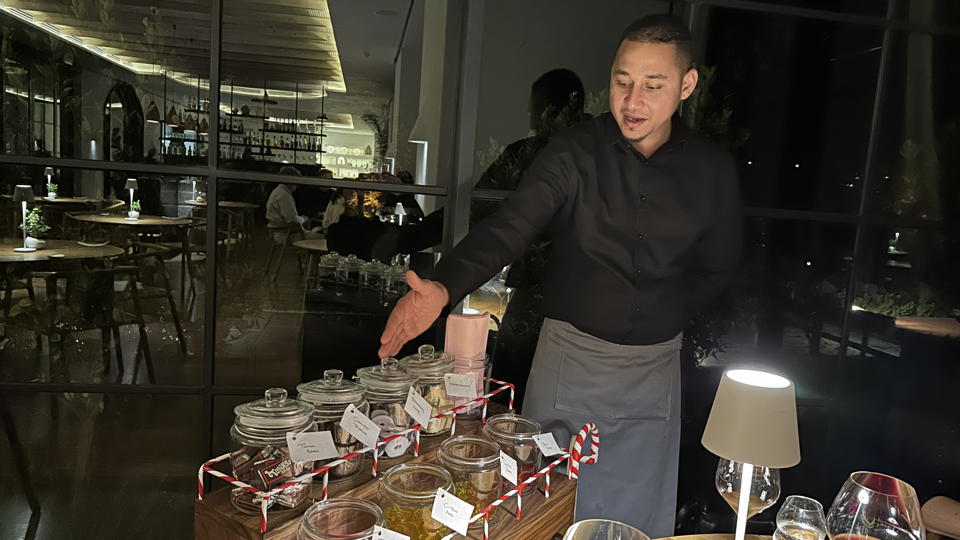
The sweet trolley
The
sweet trolley is literally a sweet trolley. We are invited to pick ‘n mix. I chose
a few and presented my bag to my driver.
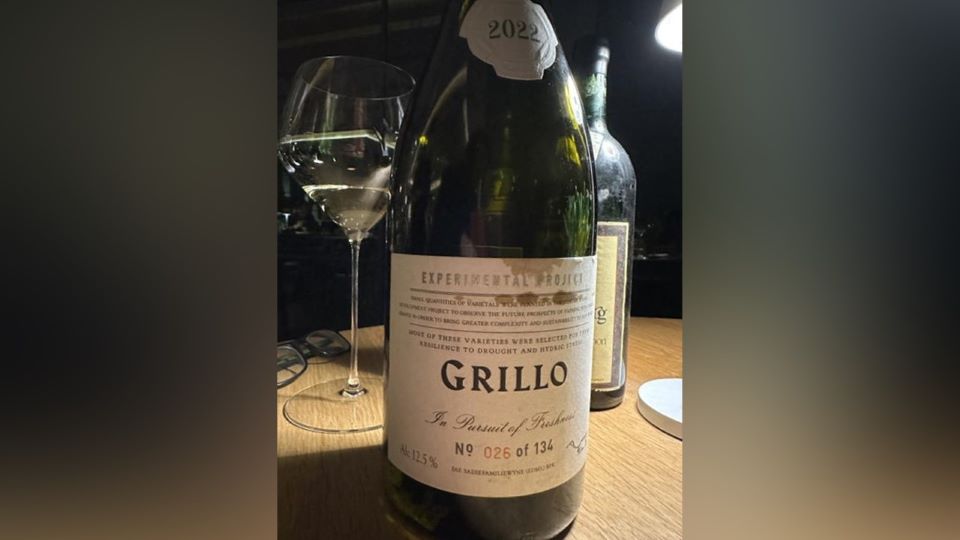
Thanks
to my guest, I am treated to a clutch of exceptionally rare South African
wines. We begin in style with the 2022 Chenin Blanc from Hogan Wines
that I reviewed positively last year. This confirms my original review, though
the nose has opened up since I tasted it, with gorgeous honeysuckle and chamomile
scents beginning to percolate through. The palate is crisp and linear,
retaining the tension it showed then with a vibrant, almost livewire finish. I
can see this Chenin lasting many years.
I will give you an idea about the rarity of the next wine. When I visited Eben Sadie in Swartland the following day, he exclaimed, half in disbelief: “Where did you drink that?” Sadie made only 134 magnums of the 2022 Grillo that was distributed directly to a select number of restaurants in the Cape. It has a delectable bouquet that needs a few minutes to open, eventually offering lemon verbena and subtle lanolin scents. The palate is not exceptionally complex, but it has a nuanced, Muscat-like element that is attractive. Fine tension all the way through, perhaps not terribly long, but quite distinctive with punchy salinity on the finish.
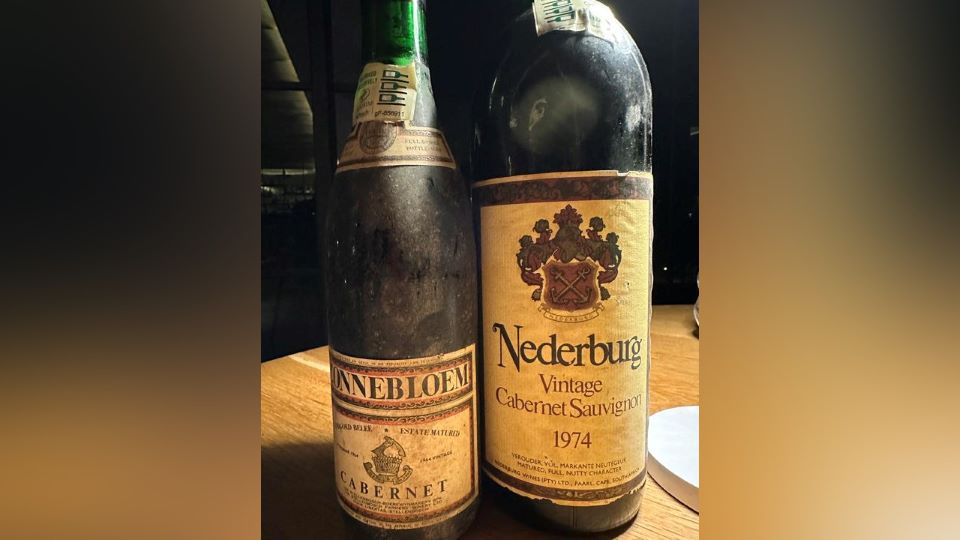
The
following pair hail from the Apartheid era when the wine industry was
government-controlled, and the wines were sold domestically. As I have written
before, many of these bottles have become highly coveted and fetch sums not out
of place in the Côte d’Or. This is partly because so few survived, and nowadays,
they usually only sell at auction. In my experience, it is not a case of
emperor’s new clothes…they can be incredibly fine. The 1964 Cabernet
Sauvignon from Zonnebloem would probably have been matured in
concrete vats without oak, possibly with some Cinsault in the mix. It has an
immediate nose that is delectable: red fruit, warm red brick and camphor, to my
mind, almost Grenache-like. The palate is sweet, and perhaps subliminally due
to the vintage being synonymous with the Right Bank, it did possess a
Saint-Émilion-like allure and plushness, white pepper and kirsch towards the
finish. Wonderful. The 1974 Cabernet Sauvignon from Nederburg Wines
is initially funky and off-putting, completely shaded by the Zonnebloem. This
dissipates after around 45 minutes, revealing tertiary scents, bergamot and
light cedar. The palate is very well-balanced with garrigues-tinged red fruit,
wild fennel and leather towards the finish. This responded positively to
aeration against all expectations. We finished with something more up-to-date: the
2020 Nom Pinot Noir from Saurwein. This has a pretty, playful
nose with sprightly red fruit, cranberry and pomegranate scents, as well as a
touch of blood orange. The palate is pure Pinot with fine tannins, which may
not be the most complex that Jessica Saurwein has made yet, with a caressing
finish and just the right amount of piquancy.
La Petite Colombe certainly ranks among the best meals of 2024, and it lives up to the billing. It showcases the dazzling array of ingredients around South Africa and neighboring countries, and the execution in the kitchen is quite brilliant. The dishes are not straightforward and demand a little reflection before you pop them down your gullet. This is a place to come if you wish to open your gustatory horizons because the combinations are intermittently startling, always with freshness so that nothing feels heavy. There’ll be enough room in your belly by the time the sweet trolley is wheeled around. If you are touring this wonderful land, then put La Petite Colombe at the top of your to-do list.
© 2024, Vinous. No portion of this article may be copied, shared or re-distributed without prior consent from Vinous. Doing so is not only a violation of our copyright, but also threatens the survival of independent wine criticism.

